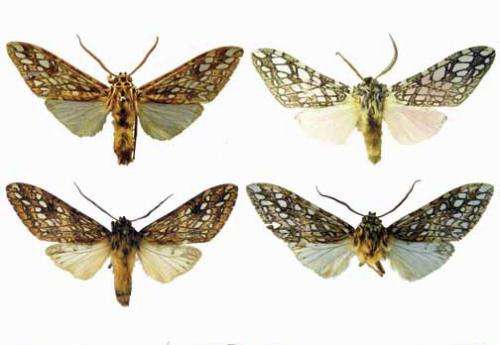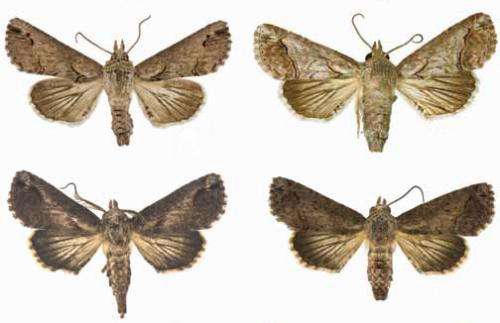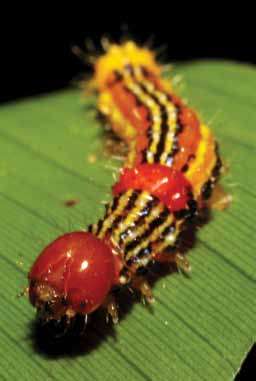ZooKeys opens the gates to America's moth diversity

Since its inception in 2009, the "Contributions to the systematics of New World macro- moths" series in ZooKeys has been playing an important role in publishing taxonomic changes and new discoveries concerning moth diversity in North America. With a total of 49 publications by 38 authors, this well-established series is among the topic leaders, alongside publications such as Canadian Staphylinidae.
Geographic coverage in Zookeys has previously focused primarily on the North American fauna (Canada, United States and Mexico). This issue marks a rapid acceleration in contributions concerning tropical areas: its articles expand the geographic reach to regions from all over North and South America, the adjacent islands and territories.

The total of 27 new species described in this issue includes moths from North America, Venezuela, Brazil, Argentina and the Dominican Republic. Among the more interesting ones are 5 newly described additions to the particularly big family of Neotropical tigermoths. As the name suggests, they can be easily recognized by their wing decoration that imitates the fur pattern of a big cat.

Another newly described species that could be of great interest was found near the Brazilian Airport, Salvador. Despite its modest looks, this animal could potentially be used for biological control in Florida against the invasive and problematic Brazilian peppertree, which is the natural habitat and food for these moths.
More information: Schmidt BC, Lafontaine JD (2013) Contributions to the systematics of New World macro-moths IV. In: Schmidt BC, Lafontaine JD (Eds) Contributions to the systematics of New World macro-moths IV. ZooKeys 264: 1. doi: 10.3897/zookeys.264.4687
Journal information: ZooKeys
Provided by Pensoft Publishers




















